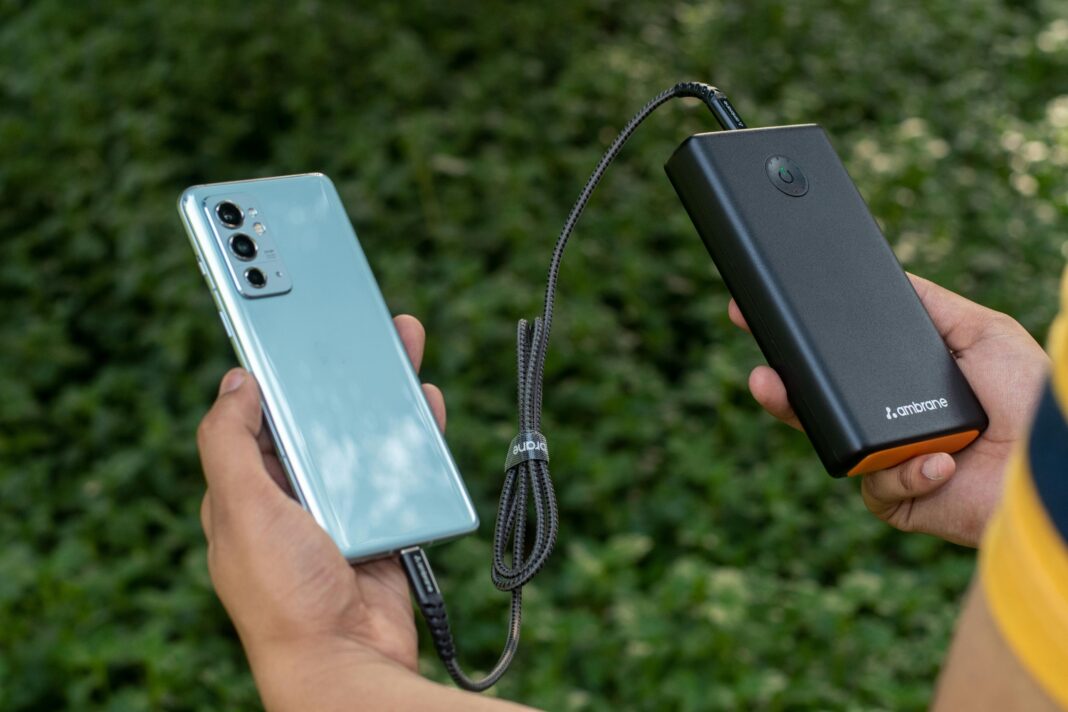Smartphone batteries are the lifeline of our daily digital activities, yet they remain one of the most frustrating limitations of modern mobile technology. Whether you’re an iPhone loyalist or an Android enthusiast, the struggle to make your battery last through the day is universal. This comprehensive guide goes far beyond the basic battery-saving tips you’ve heard before, diving deep into the science of lithium-ion batteries, advanced optimization techniques, and little-known tricks that can add hours to your daily usage.

Smartphone Battery Fundamentals
Before we explore optimization techniques, it’s crucial to understand how smartphone batteries work at a fundamental level. Modern smartphones primarily use lithium-ion (Li-ion) or lithium-polymer (Li-po) batteries, which offer high energy density and relatively long lifespans compared to older battery technologies.
The Chemistry Behind Battery Degradation
Every lithium-ion battery undergoes gradual degradation through two primary mechanisms:
- Cyclical Aging: Each complete charge cycle (from 0% to 100%) causes microscopic physical changes to the battery’s electrodes. After about 300-500 full cycles, most batteries will retain only about 80% of their original capacity.
- Calendar Aging: Even when not in use, batteries slowly degrade due to chemical reactions within the cells. High temperatures dramatically accelerate this process – a battery stored at 25°C (77°F) will degrade about 4% per year, while at 40°C (104°F) this jumps to 15% annually.
How Charging Patterns Affect Longevity
Contrary to popular belief, how you charge your phone impacts battery health more than how often you charge it. The most damaging practices include:
- Deep discharges (regularly letting your battery drop below 20%)
- High heat exposure during charging (especially while fast charging)
- Keeping the battery at 100% charge for extended periods
- Using poor-quality chargers that provide unstable voltage
Modern battery management systems help mitigate some damage, but user behavior remains the primary factor in battery longevity.
Display Optimization: Your Biggest Power Drain
The display consistently ranks as the single largest consumer of battery power in smartphones, typically accounting for 30-60% of total energy use. Optimizing your screen settings provides the most significant battery life improvements.
Advanced Brightness Control Techniques
While most users know to lower brightness, few implement these advanced strategies:
- Environment-Adaptive Brightness: Both iOS and Android offer intelligent brightness adjustment features that learn your preferences in different lighting conditions. Train these systems properly by manually adjusting brightness for a week in various environments.
- Sunlight Boost Alternatives: Many phones dramatically increase brightness in sunlight. Disable this feature and instead use a matte screen protector to reduce glare without maxing out brightness.
- Night Shift/Blue Light Filter: These features reduce blue light emissions while also slightly decreasing power consumption on most display types.
OLED-Specific Optimization
For phones with OLED/AMOLED displays (most flagship models):
- True Black Wallpapers: Since OLED pixels turn off completely to display black, using pure black backgrounds can save significant power. Many dark mode implementations don’t use true black (#000000).
- Pixel Refresher Apps: These help prevent burn-in while also optimizing power distribution across pixels.
- Always-On Display Customization: Limit display timeout duration and customize which information appears to minimize power use.
Advanced App Management for Maximum Efficiency
While closing background apps seems logical, modern operating systems actually manage background processes quite efficiently. The real battery savings come from smarter app management strategies.
Identifying Hidden Battery Drainers
Use these advanced techniques to uncover stealthy power consumers:
- Developer Options Battery Stats: Enable developer options to access more detailed battery usage statistics that show system-level processes.
- Wi-Fi Scanning Overhead: Many apps constantly scan for networks even when Wi-Fi is off. Disable “Wi-Fi scanning” in location settings.
- Mobile Radio Active Time: Some apps keep the cellular radio active longer than necessary. Check this metric in Android’s developer battery stats.
Notification Optimization Framework
Push notifications represent one of the most overlooked battery drains. Implement this tiered notification system:
- Critical Alerts: Allow immediate notifications only for messaging, calls, and security apps.
- Batch Processing: Set less important apps (social media, news) to deliver notifications in scheduled batches.
- Silent Category: Completely disable notifications for apps that don’t provide timely value.
Network and Connectivity Mastery
Wireless radios consume substantial power, but few users optimize these settings effectively.
5G vs. LTE: The Battery Impact
While 5G offers speed advantages, it typically consumes 20-30% more power than LTE. Create location-based network profiles:
- 5G Zones: Enable 5G only in areas with strong coverage where you need maximum speed.
- Default LTE: Use LTE as your everyday network for better battery life.
- Automatic Fallback: Set your phone to automatically switch to 3G in areas with poor LTE coverage to avoid constant signal searching.
Bluetooth Low Energy (BLE) Optimization
Modern Bluetooth implementations are fairly efficient, but these tips help further:
- Device-Specific Pairing: Only enable Bluetooth when actively using connected devices.
- Codec Selection: Choose more efficient audio codecs (AAC over aptX for battery savings).
- Beacon Filtering: Disable unnecessary Bluetooth scanning for location services.
Advanced Charging Techniques for Longevity
How you charge your phone significantly impacts long-term battery health. These professional-grade techniques can double or triple your battery’s lifespan.
The 40-80 Rule Explained
While keeping your battery between 40% and 80% charge is often recommended, the science behind this is fascinating:
- Voltage Stress Reduction: Lithium-ion batteries experience less stress at middle charge levels. The voltage per cell at 100% charge is about 4.2V, while at 50% it’s around 3.7V.
- Chemical Stability: The electrodes experience less structural damage when maintained at moderate charge levels.
- Practical Implementation: Use smart plugs or apps that alert you when charging reaches 80%. Some manufacturers like Sony and ASUS include built-in charging limit features.
Temperature Management During Charging
Battery temperature is the silent killer of longevity. Follow these thermal guidelines:
- Optimal Charging Temp: Charge between 15°C and 25°C (59°F to 77°F) for best results.
- Cooling Techniques: Remove cases during fast charging, avoid charging on soft surfaces, and consider using a small fan in hot environments.
- Winter Charging: In cold weather, warm your phone to at least 10°C (50°F) before charging to prevent lithium plating.
Operating System-Specific Optimization
Android Battery Optimization
- Adaptive Battery: This machine learning feature in modern Android versions learns your app usage patterns to optimize background activity.
- App Standby Buckets: Android categorizes apps into active, working set, frequent, and rare buckets. You can manually adjust these classifications.
- Doze Mode Tweaking: Use ADB commands to customize Doze mode parameters for your usage patterns.
iOS Power Management
- Background App Refresh Customization: Unlike Android’s all-or-nothing approach, iOS allows per-app background refresh settings.
- Significant Location Changes: This power-efficient alternative to continuous GPS tracking works well for location-based apps.
- Low Data Mode Benefits: Surprisingly, iOS’s Low Data Mode also conserves battery by reducing network activity.
Hardware Maintenance and Replacement
When to Replace Your Battery
Look for these telltale signs of battery degradation:
- Unexpected Shutdowns: If your phone turns off at 20-30% charge, the battery can’t deliver proper voltage under load.
- Swollen Battery: Any bulging in the phone’s chassis indicates dangerous battery swelling.
- Extreme Charging Times: If charging from 0% to 100% takes significantly longer than original specs.
Choosing Replacement Batteries
- OEM vs Third-Party: While OEM batteries are ideal, reputable third-party options can offer good value if they provide proper battery management circuitry.
- Capacity Considerations: Some aftermarket batteries advertise higher capacities than original – verify these claims through professional reviews.
- Installation Quality: Poor battery installation can lead to dangerous situations. Always use professional repair services for battery replacements.
Emergency Power Saving Protocols
When you absolutely need to stretch every last percent of battery:
- Ultra-Low Power Mode: Beyond standard power saving modes, disable all radios, reduce CPU performance to minimum, and switch to grayscale display.
- Offline Functionality: Pre-download maps, switch to offline music, and prepare essential documents for offline access.
- Strategic Reboot: A clean reboot can sometimes kill hidden processes draining battery.
Future Battery Technologies on the Horizon
While current lithium-ion technology dominates, several promising alternatives may revolutionize smartphone power:
- Solid-State Batteries: Offering higher energy density and faster charging without degradation risks.
- Graphene Batteries: Potential for ultra-fast charging and incredible lifespan.
- Alternative Chemistries: Sodium-ion and lithium-sulfur batteries may offer more sustainable options.
Frequently Asked Questions (FAQ)
1. Does wireless charging harm battery health more than wired charging?
Wireless charging typically generates more heat, which can accelerate degradation. However, modern implementations with proper cooling are only slightly worse than wired charging. The convenience often outweighs the minimal additional wear.
2. How accurate are smartphone battery health indicators?
Manufacturer battery health percentages are estimates based on voltage curves and charge cycles. For precise measurements, specialized equipment is needed. Generally, they’re accurate within 5-10 percentage points.
3. Should I fully discharge my battery occasionally to “calibrate” it?
This was necessary for older nickel-based batteries but is harmful to lithium-ion batteries. Modern battery management systems don’t require full discharge cycles for calibration.
4. Is it better to charge my phone multiple times a day or wait until it’s low?
Frequent top-ups between 40-80% are actually better for battery health than deep discharge cycles. The “memory effect” doesn’t apply to lithium-ion batteries.
5. Can certain apps really damage my battery?
While apps can’t physically damage batteries, poorly coded apps that cause excessive heat (through constant processing or maxing out screen brightness) can accelerate degradation.
Final Comprehensive Battery Preservation Strategy
Implement this tiered approach for maximum battery life and longevity:
- Daily Habits:
- Maintain 40-80% charge range when possible
- Use dark mode on OLED screens
- Disable unnecessary background activity
- Weekly Maintenance:
- Review battery usage statistics
- Update apps and operating system
- Clean charging port and check cable condition
- Monthly Checkups:
- Monitor battery health percentage
- Deep clean background processes
- Reassess notification needs
- Annual Procedures:
- Consider professional battery replacement if capacity drops below 80%
- Review all installed apps and remove unused ones
- Evaluate whether current charging accessories need replacement
By understanding the science behind battery technology and implementing these comprehensive optimization strategies, you can dramatically extend both your daily battery life and the long-term health of your smartphone’s battery. Remember that small, consistent optimizations yield better results than occasional extreme measures. Start with the changes that best fit your usage patterns and gradually incorporate more advanced techniques as they become habitual.

